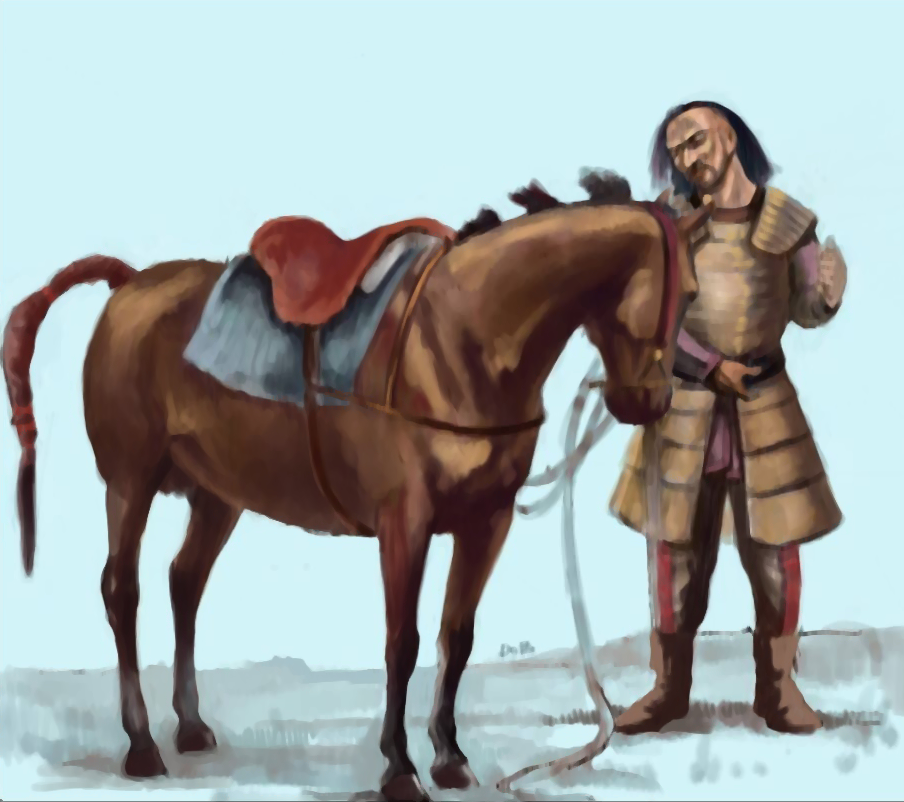In Polish, translation to follow soon, about the horses and horse tack of Jan III and his entourage in 1676:
W roku Pańskim 1676 sekretarz króla Jana III pan Cossimo Brunetti (zmarły 1678) napisał raport to księcia Kosma (Cosimo) III Medyceusza opisujący uroczysty wjazd Jana III Sobieskiego i jego koronacje w Królewskim Mieście Krakowie.
In 1676 Brunetti Cosimo (d. 1678), secretary to our king Jan III Sobieski, wrote a report to duke Cosimo III d'Medici - the subject matter being the Jan III ceremonial entry into the royal city of Kraków and his crowning there :
''Szły za temi cztery chorągwie usarzów ; każda o 200. koni, to jest : z 60. towarzyszów szlachty, z których każdy miał dwóch lob trzech pocztowych. Próżna byłaby praca opowiadać okazałość i piękność rycerstwa tego; mówić bowiem, o zbrojach jego, o wysokich kopiach z długiemi charągiewkami, o tygrysich ich skórach, pysznych koniach, kalbakach, rzędach, strzemionach, cuglach od złota, haftów i drogich kamieni, byłoby to przyćmić ich piękność. Jest to jazda jakiej niema na świecie; żywości i przepycha, bez widzenia własnemi oczyma, pojąć niepodobna. Po usarzach jechała szlachta przepysznie ubrana na dzielnych dżanetach. Tyle ich było, iż sami dziwowali się Polacy.''
''Okazał się nakoniec Król Jmć na dzielnym rumaku; rzęd jego okryty dyamentami. Król Jmć miał na sobie szubę niebieską przetykamą złotem i srebrem, podszytą so- bolami, żupan na dnie pąsowem, przetykany złotem z gu-
zami dyameotowemi , i spięciem z dużych dyamentów i karbankułu, tak wielkiem,' jak podobnego niema w Europie; przy kołpaku z kokardą dyamentową, były trzy perły nie- widzianej wielkości, z których wychodziło kilka czarnych piór czaplich. W około końca szło mnóstwo paziów bo- gato po Francuzku ubranych, i 24 lokajów ubranych po persku w kolory tak dobrane, tak bogate, iż oczy wabiły. [..] iż się zdawało, że się już kalwakada skończyła; gdy raptem pokazało się trzynaście koni, prowadzonych jeden za drugim , przyodzianych w drogie, złociste, szyte perłami i drogiemi kamieniami tyftyki; trzynasty koń miał rzęd, kulbakę, strzemiona, cugle, pistolety, olstra, szable, czekan ze stali, tak sztucznie i misternie robionej, iż Książe Toskański, niema w galeryi, ni na dworze swoim artystów,
którzyby co podobnego wypracować mogli. ''
Julian Ursyn Niemcewicz, Zbior pamietnikow Tom V
...
ps
CNN article on the American wild horse aka mustang





















